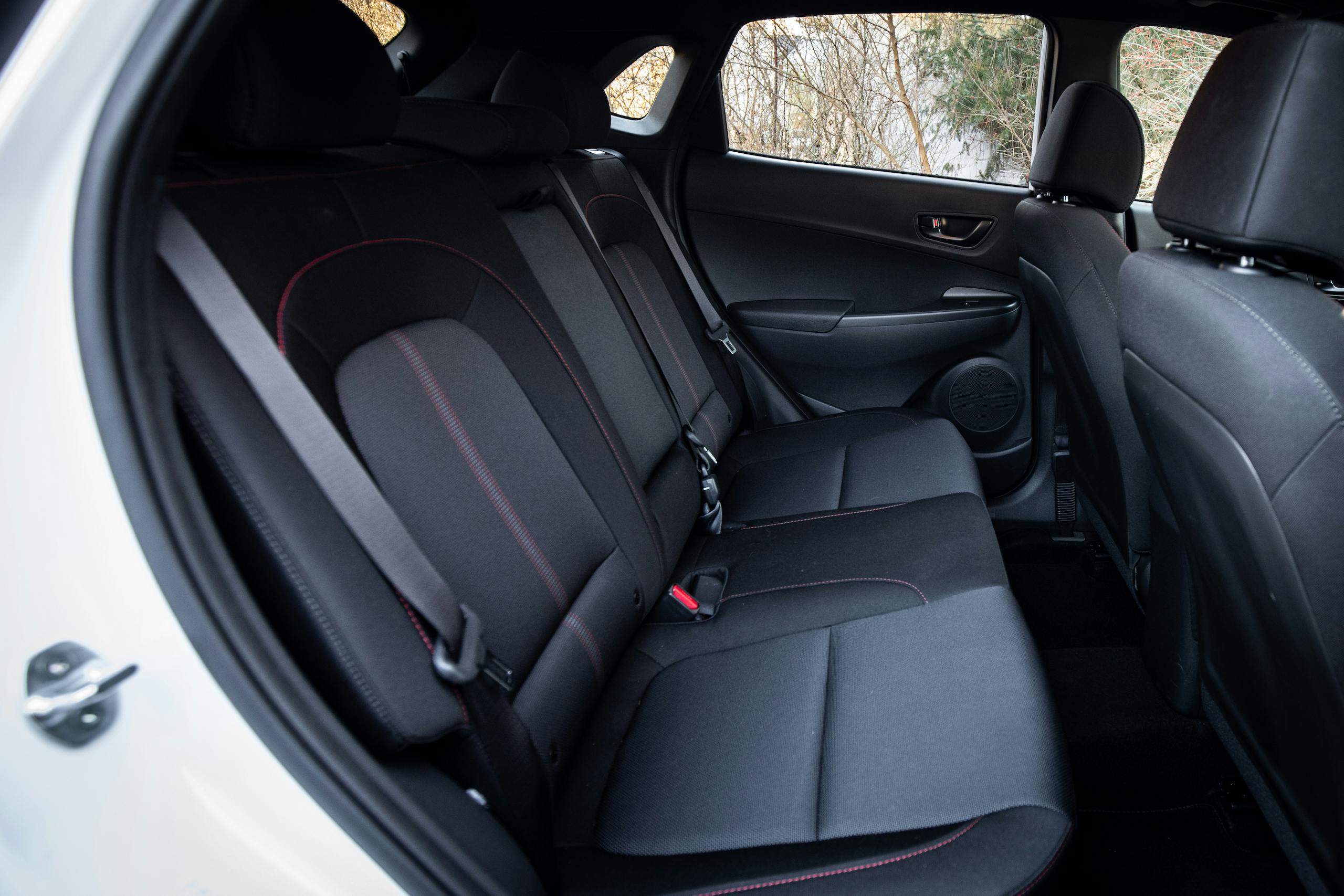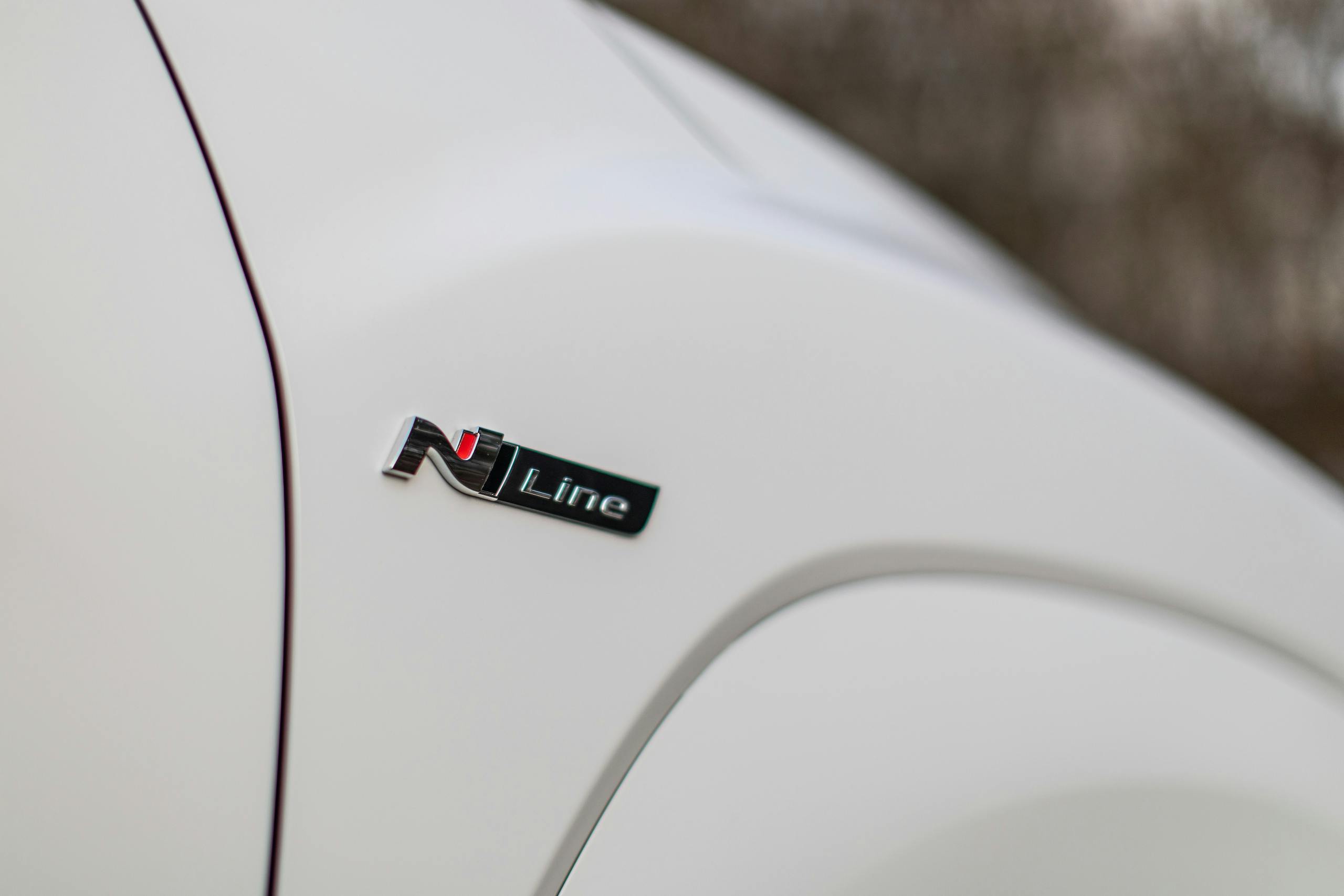Media | Articles
Review: 2022 Hyundai Kona N Line
To introduce Diet Coke to the public in 1982, ad man Steve Norcia and his team at McCann Erickson developed the tagline, “Just for the taste of it.” Norcia hoped the slogan would position the soda as “a great-tasting soft drink that happens to have one calorie rather than a diet drink that tastes great.” This is precisely how we need to examine the Kona N Line. This not some lite version of the stout Kona N, but rather a capable, even handsome compact sport utility that leaves little to be desired.
Still, given the N Line badging and the reputation of the Veloster N, it’s reasonable to expect some kind of performance element at play here. Rather than the naturally aspirated, 147-hp 2.0-liter found in SE and SEL Konas, N Line utilizes Hyundai’s well-traveled turbocharged 1.6-liter four-cylinder. The boosted engine is good for a bit more grunt (195 horsepower) but it’s nothing thrilling and also available in the Kona Limited. Which is to say, not exclusive to the N Line. Cog-swapping is handled by a seven-speed dual-clutch automatic transmission.
In truth this a largely aesthetic affair, but it’s an effective one. Parked next to a base Kona, our Lunar White test car is the clear curb-appeal champ. The N Line body cladding around the vehicle’s perimeter is finished in body color rather than gray plastic, and the N Line-specific 18-inch alloy wheels are attractively oversized. The lower-riding nose, body color wheel flares, and chunky rear bumper provide an added visual bulk that reads like Touring Car Champ, not boy racer. Three snake nostril vents between the headlights (an N-Line-only feature) replace the Hyundai badge and add to the performance-car vibe.

It’s easy to be cynical about car whose looks are perhaps overly ambitious in this way, but this a savvy move on Hyundai’s part. The full-fat N portfolio has grown beyond the stellar Veloster N to include both a Kona and Elantra version, and leveraging the appeal of a performance division is a time-honored tradition. Add N Line to Ford’s ST-Line, Audi’s S-Line, and VW’s R-Line. Creative? No. But it must work, because Hyundai has added the trim level to the Elantra, Sonata, and Tucson as well.
This N Line vehicle is particularly well executed, and that has a lot to do with the Kona’s proven bones. “The base Kona is great—peppy, handles well, and doesn’t feel offensively cheap inside,” says Executive Editor Eric Weiner. “It’s my go-to on rental car lots.” Our particular test car rang the till for just under $30K (about $5000 less than the Kona N), which included all-wheel drive ($1500) and a Tech Package ($2500) that brings a 10.25-inch touchscreen with navigation, Harman Kardon audio, a power sunroof, adaptive cruise control, and LED exterior lighting.
Marketplace
Buy and sell classics with confidence
You need to look inside the cockpit to appreciate the N Line’s other flairs—a leather-wrapped shift lever, cloth sport seats, and a red-accented interior with enough italicized Ns throughout the space to spell the word “banana” twice-over. Much like the Veloster, plastic is the material of choice throughout the space, but Hyundai employs several textures to break up the molded monotony. Unlike the Veloster, the seating position is more upright which makes it easier to climb in and out of the car. Driver and shotgun passengers will find plenty of space, while back seat occupants may feel a bit more cramped, especially if behind six-footers or taller. A person sitting in a back-row seat means said seat can’t be folded down, however, and that drastically cuts into storage. The minute you leave your friends on the curb to wait for a Lyft, however, you’ll find that cargo space skyrockets. Keeping with the trend of hauling vintage wares in Hyundai press cars, I squeezed an old mechanical vending machine in the back with ease. Since the Kona is more of a lifted hatchback than a truly boxy sport utility, cargo fits best if it is shorter in stature or can be laid on its side.
Whether rolling deep or just flying solo, the Kona N Line is a delight from behind the wheel. Hyundai has its steering dialed in perfectly for a punchy city runabout, with a touch of weight to the steering and a wonderful turning radius. I never once shied away from a parking spot, though I was particularly careful around high curbs with the snazzy N Line wheels and low-hanging front fascia. Despite a more upright seating position, the utility feels plenty sturdy and the suspension is rigid enough to stave off any noticeable lean. Three modes–Comfort, Sport, and Smart–can be selected through a knob adjacent to the shifter, and they most noticeably affect the behavior of the transmission. Smart mode shifts short, functioning like an Eco mode ordinarily would. Sport lets the dual-clutch hold gears much longer than usual, so you can wind out the tach like Verstappen on a fresh set. Outside of that aggressive setting, however, the dual-clutch doesn’t make the most of the engine’s power; in default Comfort mode the dreadful transmission programming produces listless and indecisive shifts. On the upside, the Kona N Line makes about 50 more ponies than its SE siblings and still achieves similar fuel efficiency—32 mpg combined. And for all you penny pinchers, Hyundai recommends using regular 87-octane rather than premium as in many higher-performance turbo engines.
A small, slow car with the right handling characteristics can still be fun, though, as our recent romp in a humble Toyota Corolla Hatch demonstrates. And this Kona N Line is indeed a (slightly lifted) box of chuckles. It’s so tossable that the N might as well stand for “nimble”. The dual-tip exhaust (another N Line exclusive) even provides a confident, albeit faint, burble. The Harman Kardon audio system emits clear tunes amid even the most intense bass lines, but the a slight bias toward the second row creates a more even-sounding atmosphere. Knobs abound, and buttons are large and easy to poke. Likewise, the big center screen and wide digital instrument cluster are simple to navigate through and present some of the best visuals at this price point. (I never grew tired of the Dragonball Z-like animations on the gauge cluster when selecting drive modes.)
All told, the Kona N Line provides an option to buyers looking for a little extra fizz but not all the extra calories (read: cost) of a full-fledged N. A hot hatch this is not. But if you’re in the market for a mid-grade compact sport utility, give the N Line a test drive. If anything, “just for the taste of it.”
2022 Hyundai Kona N Line
Price: $26,925/$30,925
Highs: Sprinkles of N-branded goodies elevate the experience. Handling is sublime for a subcompact. Can haul just as much as a big hatchback.
Lows: Options bring it within a few grand of Veloster N money. Underpowered. Transmission needs finer tuning.
Summary: A regular Kona is plenty good, but the N Line is a natty, lively twist with a touch of extra sweetness.
































































